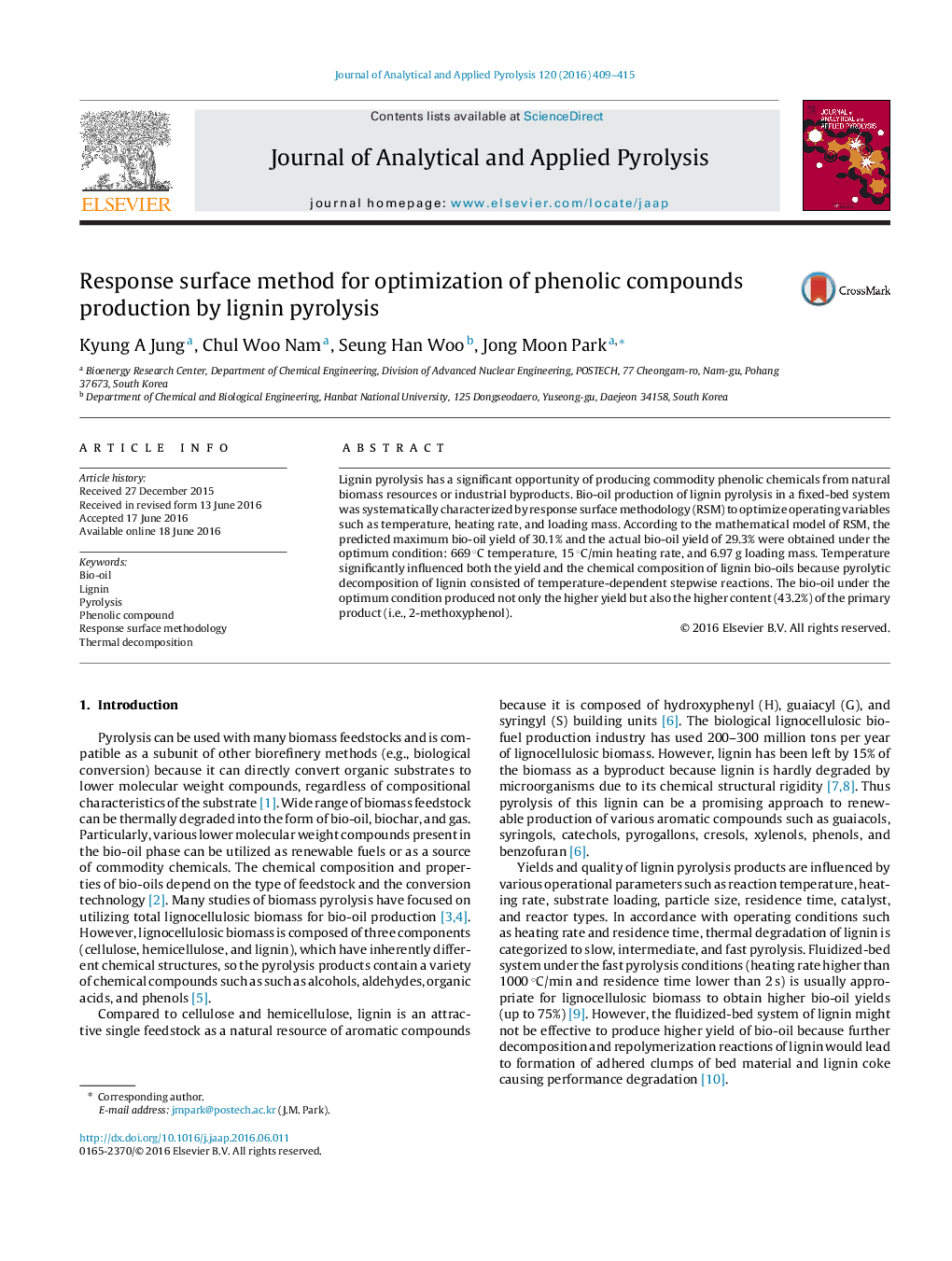| Article ID | Journal | Published Year | Pages | File Type |
|---|---|---|---|---|
| 1196568 | Journal of Analytical and Applied Pyrolysis | 2016 | 7 Pages |
•Lignin pyrolysis in a fixed-bed system was analyzed using response surface methodology.•Effects of temperature, heating rate, and loading mass on bio-oil yield were determined.•The effect of temperature on the phenolic composition of lignin bio-oil was analyzed.•Lignin pyrolysis under the obtained optimum condition was analyzed.
Lignin pyrolysis has a significant opportunity of producing commodity phenolic chemicals from natural biomass resources or industrial byproducts. Bio-oil production of lignin pyrolysis in a fixed-bed system was systematically characterized by response surface methodology (RSM) to optimize operating variables such as temperature, heating rate, and loading mass. According to the mathematical model of RSM, the predicted maximum bio-oil yield of 30.1% and the actual bio-oil yield of 29.3% were obtained under the optimum condition: 669 °C temperature, 15 °C/min heating rate, and 6.97 g loading mass. Temperature significantly influenced both the yield and the chemical composition of lignin bio-oils because pyrolytic decomposition of lignin consisted of temperature-dependent stepwise reactions. The bio-oil under the optimum condition produced not only the higher yield but also the higher content (43.2%) of the primary product (i.e., 2-methoxyphenol).
